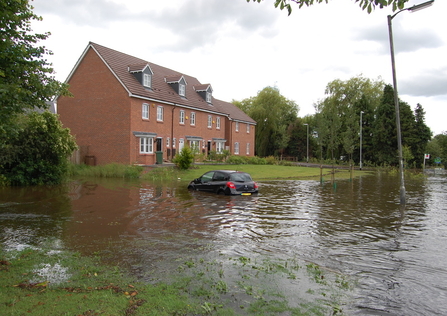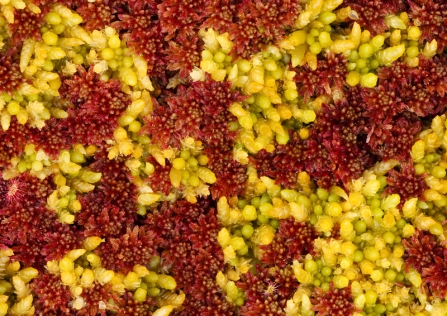Following the devastating flooding in the Derwent and Amber valleys in Derbyshire, here are some thoughts on how we as a society can work with the natural world to identify solutions to the problems we face.
People regularly talk about building on flood plains being a bad idea. This is true for the people who buy the houses or businesses concerned. However, it’s more complicated than that. Rainfall is not distributed evenly across a catchment. You get much more rainfall in the uplands than the lowlands, so for Derbyshire, that’s on the hills of the Peak District and Peak fringe. But all of this water flows downhill. Once the rainfall has happened, it’s in a closed system, being removed by rivers and streams. Realistically, once water is in a river, it’s very difficult to control. The only control you have is to hold it back completely, using dams (which have no real relevance in managing flooding), or holding it into the river, using flood defences. And thinking back to the closed system, this water will go somewhere, and that somewhere is downstream. So flood defences, which may protect an “asset” (community, factory, road, power station, farmland) will stop water leaving a river, increasing the volume of water in the river and making flooding more likely downstream.
The Environment Agency base their decision making on how high to build them by looking at the percentage likelihood of flooding, and describe it as the chances of it happening in any given time period. So, a 1 in 100 year flood just means that there is a 1% chance of it happening. Summarising hard flood defences, which do work in protecting our towns and cities, they only work to the point that they were designed for (a 1 in 50 year flood, for example) , at which point they stop working and you get “over-topping”.
Climate Change predictions (which are being borne out in reality) are that we will get more intense rainfall, meaning that 1 in 100 year events will happen much more regularly. So, in Derbyshire in 2019, we have had more rainfall than average, but on fewer days, meaning that rainfall events are more intense, making over-topping more likely. Matlock is viewed by the EA as a 1 in 100 flood risk, but the town centre has flooded at least 5 times in the last 60 years.
Flood risk managers are looking at two key characteristics on a graph relating rainfall to the likelihood of flooding. The first is the peak flow, which is the highest level that the water reaches and the second is the lag time, which is the gap between the rain falling and when it all reaches a certain point in the river network.
And this is where managing water within the landscape comes in, and the best from a wildlife point of view is using Natural Flood Management. Every decision that people take within the landscape changes the chances of flooding downstream, particularly when multiplied by millions of people and thousands of land managers. Keeping water in the landscape, works generally in two ways:
- Making space for water (creating volume for water to sit in and reducing peak flow);
- Slowing the flow (lengthening the lag time between rainfall and peak river flows).
The simplest one of these two is Making Space for Water. This can be about creating ponds that hold water temporarily and the work being done in the uplands by the Moors for the Future Partnership and Yorkshire Peat Partnership, to block gullies, is about making space for water, physically stopping water from leaving the hill. Tens of thousands of small dams have been built across the Pennines. In the lowlands you can physically construct dams and allow floodplains to reconnect with rivers, flooding farmland and allowing water back into rivers when the danger of flooding has passed.
But it’s not all about big places to hold water. Possibly the most important space for water is virtually invisible, in soil. In the uplands, peat should be about 97% water. The restoration work being done there by the Moors for the Future Partnership to rewet the peat does store water within the peat and is critically important. But this is permanent holding of water and bogs in pristine condition do not have much capacity to store much water at periods of high flood risk, (in Derbyshire, blanket bogs are not in good condition yet and so there is still capacity for them to hold water). Flood risk reduction is primarily about temporary storage of water and lowland soils do that very well.



